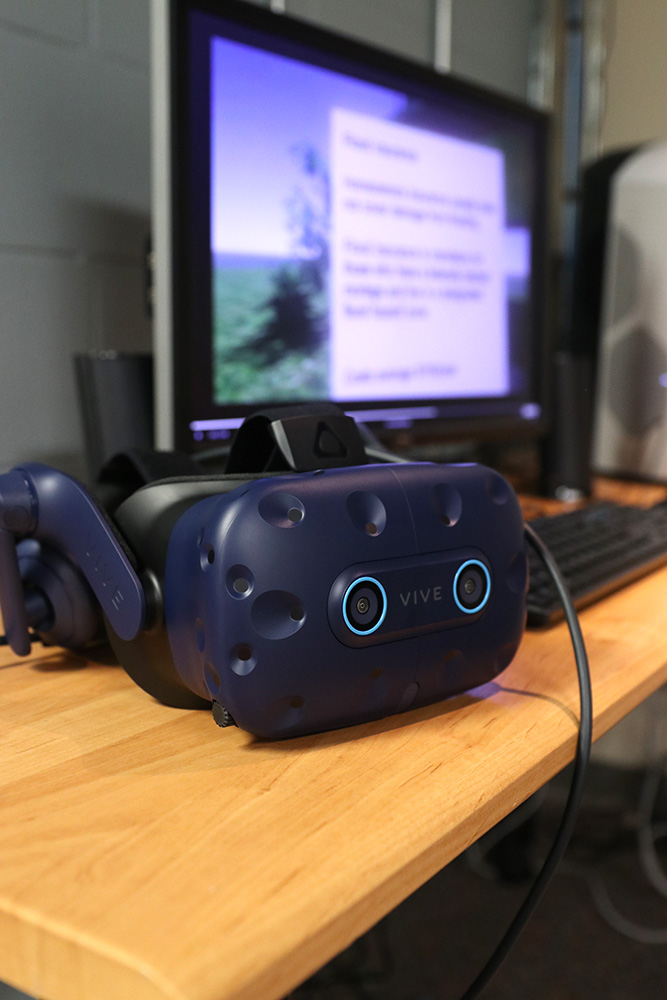Ahn leads VR project with grant from National Oceanic and Atmospheric Association

Ahn leads VR project with grant from National Oceanic and Atmospheric Association
Sun Joo “Grace” Ahn and a team of researchers are recipients of a nearly $500,000 grant funded by the National Oceanic and Atmospheric Association.
The grant will fund a project called “Salient, Interactive, Relevant, Confidence, and Action (SIRCA): Using Virtual Reality Storm Surge Simulations to Increase Risk Perception and Prevention Behaviors.”
The project uses VR to better communicate and educate the risks of storm surge and climate change among coastal residents of Georgia and South Carolina.
“The problem of climate change and sea level rise is complex,” said Ahn, director of the Games and Virtual Environments Lab (GAVEL) at Grady College. “We need to be cognizant of the fact we are trying to solve a complicated issue and help communicate these safe practices with different resources and needs.”
The new grant proposal focuses on two areas: 1. the experience of storm surge and mitigation behaviors and 2. creating a cross-platform experience that can be used with both headsets as well as a two-dimensional experience, like a kiosk at a museum, to reach the largest number of people.
Viewers, for example, may go through a simulation where they see their home flooded and experience personal risk through a storm surge. Different solutions users could have taken to mitigate the damage ahead of time are presented, like buying flood insurance, elevating their house and evacuating. The exercise is then repeated to show the effect of the viewer’s decision.
This new project is an extension of a prototype developed a few years ago that used VR to demonstrate the extent of damage to a home hit by a hurricane. The prototype was funded through a 2017 UGA Presidential Interdisciplinary Seed Grant.

Ahn explains that organizations like NOAA are looking for the most effective ways to communicate the dangers of severe weather, and VR has been successful in converting messages to action. This is one of the first research grants like this from the NOAA Weather Program Office.
Studies show that messages delivered through a VR immersive experience have a longer lasting impact versus messages delivered by video or written communication.
The UGA Marine Extension and Georgia Sea Grant is a partner in this research along with Clemson University and the National Weather Service South Carolina office.
Jill Gambill, a coastal resilience specialist with the UGA Marine Extension and Georgia Sea Grant, explained this will be an important step in communicating story surge risks brought on by hurricanes and this information is expected to be used by the Weather Service, Department of Natural Resources and emergency managers, among others.
“It can be difficult to estimate the risks and this can be helpful in understanding the impact and lesson the threat to their homes and to their families,” Gambill said. “It’s exciting to be working with this really cool product that will help people be safer.”
Another important part of this project is offering options that are available to diverse circumstances.
“We know options like elevating a house aren’t available to everyone and we want to make sure we are cognizant of presenting a range of recommendations to mitigate risk,” Gambill said.
The team will be working with organizations like the National Estaurine Research Reserve and Harambee House, an environmental justice group in Savannah, to ensure that the solutions meet the needs of communities.
The simulations will be paired with training modules through workshops and outreach, as well as follow-up surveys over time to determine if any actions were taken by those who experienced the VR education.
One of the most important benefits of VR is its impact in translational science, or taking scientific findings and communicating them to audiences so they can make informed decisions.
“Projects like this provide a huge opportunity for communication scholars to address critical social issues like climate change and directly impact the communities around us through communication science,” Ahn said.
The research is expected take place over two years.